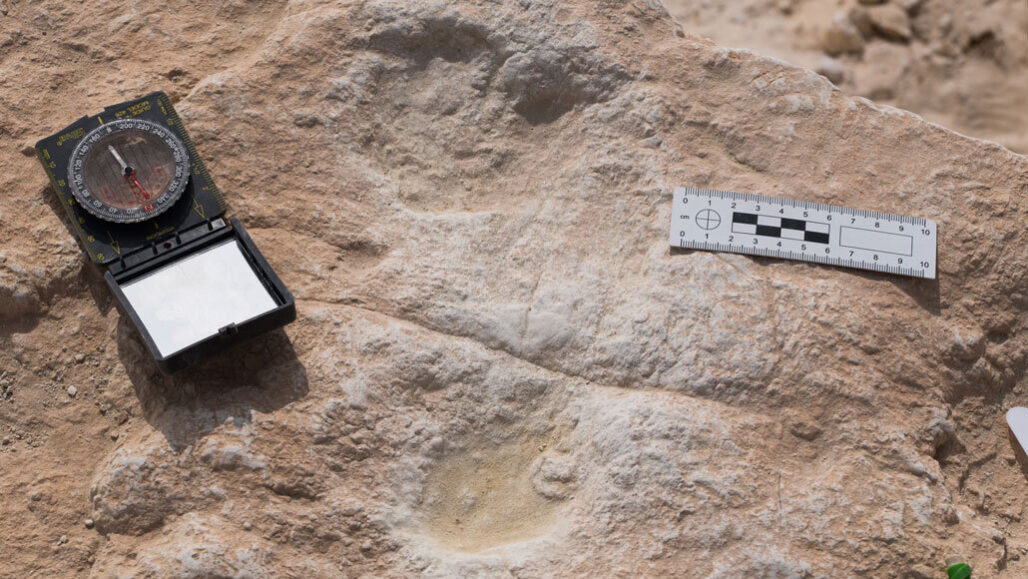Seven footprints may be the oldest evidence of humans on the Arabian Peninsula

Footprints discovered at what was once a rain-fed lake in Saudi Arabia’s Nefud Desert suggest that humans on the move made a pit stop there more than 100,000 years ago.
The seven human footprints are likely the oldest evidence of Homo sapiens on the Arabian Peninsula, a new study finds. Dating sediment from above and below the foot impressions places them around 112,000 to 121,000 years old, researchers report September 18 in Science Advances. The previous oldest evidence of humans in the region dates to at least 86,000 years ago (SN: 4/9/18).
Elsewhere in Saudi Arabia, researchers have found stone tools like those made by African H. sapiens that date to around 125,000 years ago (SN: 1/27/11), raising the likelihood that the newly discovered footprints were made by humans.
Ancient H. sapiens groups likely used the site, known as Alathar, as a watering hole and place to forage for food in surrounding grasslands, say biologist Mathew Stewart of the Max Planck Institute for Chemical Ecology in Jena, Germany and colleagues. Sediment analyses suggest ancient people reached the lake during a dry stretch when the region’s rivers and lakes were shrinking.
Other finds at the site dating to the same period include 107 camel footprints and 43 elephant footprints. Those impressions were made by herds of juvenile and adult animals, the scientists say. Fossils eroding out of footprint-bearing sediment included remains of elephants and large gazelles called oryxes, but not humans.